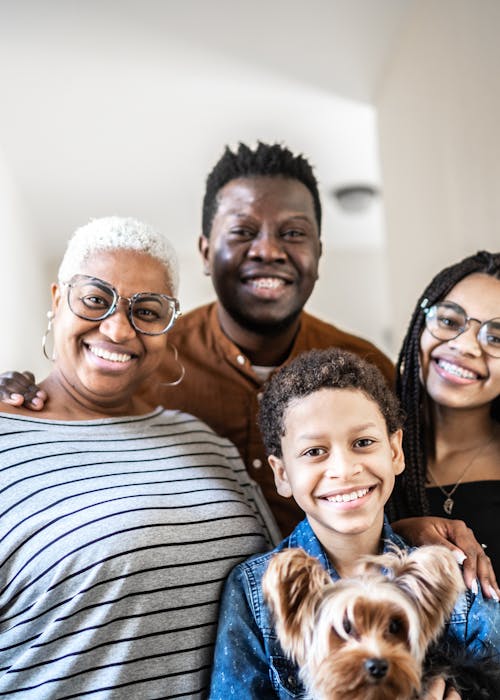

Brand-New Community Risk Ranking Reveals State of NYC Families
Insights
December 12, 2017
Since the height of the Great Recession, outcomes for New York City children and families have generally improved. But our new report out today demonstrates that outcomes in some communities have not kept pace with the recovery, and even in districts where progress has been made, ongoing and serious concerns persist.
The new edition of the Community Risk Ranking compares findings from 2010 with 2015 (the most recent data available for all 18 indicators of child well-being we measure) to illustrate where risks concentrate and how community risk levels have changed in recent years. The ability to identify where risks concentrate is crucial, as research shows that the presence of multiple risk factors can have cumulative negative effects on child development and child well-being.
The report also identifies communities where trends have been inconsistent with citywide progress made in areas such as child poverty, median incomes, infant mortality, teen birth rates, and violent felonies.
In the Bronx, the districts of Hunts Point, Mott Haven, East Tremont, Morrisania, University Heights, and Concourse/Highbridge have remained in the highest risk overall category in the years examined. Adjacent communities in the eastern part of the Bronx, including Unionport/Soundview, Throgs Neck, Pelham Parkway, and Williamsbridge, have increased in risk level.
In addition, in some communities where positive changes have occurred, there continue to be children and families who face significant challenges and barriers to well-being.
For example, on Staten Island, the North Shore has not recovered from the effects of the recession at the same pace as the city. The community district saw rates of child poverty, infant mortality and youth unemployment increase, contrary to citywide trends. In areas where improvements have been made, such as the teen birth rate, even positive trends on the North Shore have not kept pace with the rest of the city.
The risk ranking also examines outcomes in communities in each borough where progress for children and families has been decidedly mixed. Among them:
- In Eastern Queens, which has typically fared well in economic conditions and overall, Flushing had the highest share of children without health insurance in 2015, and experienced reductions in families accessing early childhood education services, and increased rent burden (meaning that more households are spending more than half of their income on rent). Queens Village had among the highest infant mortality rate and share of babies born with low birthweight, and also saw a decline in early education enrollment.
- In the Upper Manhattan community district of Central Harlem, the report shows how progress has been made across multiple domains in recent years with improvements in economic conditions, housing stability, reduced teen birth rates, and fewer violent felonies. At the same time, troubling trends have emerged in the education domain with fewer families accessing early childhood education services and Central Harlem public schools falling further behind the rest of the city in reading and math test scores.
- In Bushwick, located in the northern part of Brooklyn, the community has experienced improvements in economic and housing conditions including a decrease in parental employment instability, the share of adults without a high school diploma, and in the number of families entering homeless shelters. At the same time, the child poverty rate and median family income have remained unchanged even as there was progress along those indicators citywide.
We hope that direct service providers, elected officials, researchers, foundation and corporate program officers, and New Yorkers at large use the Community Risk Ranking to better understand the needs of the communities in which they live, work, and serve, and that greater attention is paid to advocating for the resources necessary to make New York City a better place for every child.
At CCC, we are proposing several solutions that would build on the current efforts underway to create a fairer more just city for New York’s children and families, and our city:
- Expand access to affordable family-based and center-based child care for infants and toddlers.
- Promote an integrated Pre-K for All system serving all race, ethnicity and income groups, and invest in salary parity for similarly licensed and credentialed teachers and staff.
- Leverage incentives to create parks and playgrounds, and bring food retail and community services to new affordable housing developments.
- Expand universal after-school to elementary school students and provide summer programming across the city for all preschool and school-age programs.
- Offer reduced-priced MetroCards for low income New Yorkers and create transportation alternatives in hard to reach communities.
- Address the needs of homeless children and their parents — strengthen prevention; increase investments to provide appropriate and comprehensive services to children and families while they are in shelter; and connect families to permanent housing options with needed supports.
- Expand community-based capacity to ensure timely access to health and mental services and promote multi-generational approaches to wellness.
- Deepen and broaden New York City’s local Earned Income Tax Credit and Child Care Tax Credit.
Finally, in a climate where so much is at risk in budget decisions at every level of government, it’s critical that New York City reflect on what’s been done during previous times of fiscal crisis and stand ready to take action to protect and increase investments in efforts that address the needs of children and families and ensure the upward mobility of all New Yorkers.
You can also explore the risk ranking data on CCC’s Keeping Track Online website which allows you to examine hundreds of indicators related to child well-being in New York City, as well as to explore where risks concentrate and what community assets exist to meet the needs of children and families.


